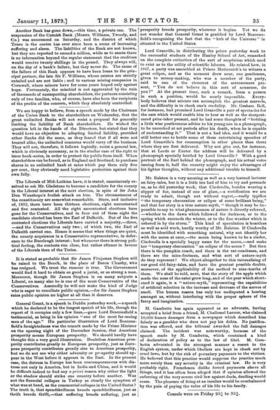Mr. Ralston is a very amusing as well as a
very learned lecturer on fairy-tales, but it is a little too bad of him to try and persuade us, as he did yesterday week, that Cinderella, besides wearing a slipper of fur, instead of one of glass,—a rectification we are ready to admit, though not without regret,—really typifies " the temporary obscuration or eclipse of some brilliant being," and that her story is a true nature-myth, " though it may be im- possible to say to what phenomenon of nature it directly referred, —whether to the dawn which followed the darkness, or to the spring which succeeds the winter, or to the fine weather which is ushered in by the storm." This kind of speculation is heartless as well as arid work, hardly worthy of Mr. Ralston. If Cinderella must be identified with something natural, why not identify her with the moon at once,—the moon being known to be a cinder, Cinderella is a specially happy name for the moon,—and make her " temporary obscuration " an eclipse of the moon ? But then there is the pumpkin coach, and there is the rat-coachman, and there are the mice-footmen, and what sort of nature-myth do they represent? We object altogether to this rationalising of our good old fairy-tales, and have the greatest possible doubts, moreover, of the applicability of the method to nine-tenths of them. We shall be told, next, that the story of the apple which made the nose of the eater grow long, and of the pear which short- ened it again, is a " nature-myth," representing the capabilities of artificial selection in the increase and decrease of the nerves of smell. The human reason has only too undisputed a hearing amongst us, without interfering with the proper sphere of the fancy and imagination.






































 Previous page
Previous page